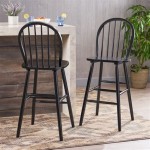Standard Armrest Height: The Essential Aspects to Consider
The standard armrest height plays a crucial role in ensuring comfort and ergonomics while using chairs and sofas. When armrests are properly positioned, they can provide support and reduce strain on the shoulders, neck, and back. Understanding the essential aspects of standard armrest height is key to creating comfortable and functional seating arrangements.
This article delves into the critical factors to consider when determining the ideal armrest height based on the user's body dimensions, the purpose of the seating, and the specific design of the furniture.
1. Body Height and Proportions
The first aspect to consider is the user's height and proportions. Armrests should be at an appropriate level for the user to rest their elbows comfortably without hunching forward or straining their shoulders. A general rule of thumb is that the armrests should be around 6 to 8 inches below the elbow crease when the user is sitting upright.
2. Purpose of the Seating
The purpose of the seating also influences the optimal armrest height. For example, armrests on office chairs should be slightly higher to encourage proper posture and support typing tasks. On the other hand, armrests on lounge chairs may be lower to provide a more relaxed and comfortable seating experience.
3. Furniture Design
The design of the furniture can also impact the ideal armrest height. Chairs and sofas with high backs may require higher armrests to provide adequate support for the head and shoulders. Additionally, the width and slope of the armrests can influence comfort and ergonomics.
4. Adjustable vs. Fixed Armrests
Some seating options feature adjustable armrests, allowing users to customize the height to their individual preferences. This can be particularly useful for accommodating different body dimensions and heights. Fixed armrests, on the other hand, provide a consistent height that may not be suitable for all users.
5. Armrest Padding and Shape
The padding and shape of the armrests also contribute to overall comfort. Properly padded armrests can reduce pressure on the elbows and forearms, while the shape of the armrests can influence how the user's arms rest on them. Rounded or contoured armrests tend to be more comfortable than flat or sharp-edged ones.
Conclusion
Understanding the essential aspects of standard armrest height is crucial for creating comfortable and ergonomic seating arrangements. By considering factors such as body height, purpose of the seating, furniture design, and armrest adjustability, it is possible to optimize the user's experience and minimize discomfort. This article provides a comprehensive overview of these considerations to assist designers, manufacturers, and users in making informed decisions regarding armrest height.

Must Have Measurements For Comfortable Seating Wood

How To Pick A Chair Guide For Buyers And Pers

Ghost Dims Furniture Design Chair Iconic

Polished Standard Wooden Armrest Chair At Rs 4000 Piece In Churu Id 23882968373

Maykoosh Gray High Back Executive Premium Faux Leather Office Chair With Support Armrest And Lumbar 29477mk The Home Depot

How To Apply Dda Street Furniture Seats And Tables

Console Mounted Height Adjustable Armrest With Standard Size Arm Rest Foam Pad Troy S

Homestock Upholstery Adjustable Height Ergonomic Standard Chair In Gray Set Of 2 50219hd The Home Depot

Queen Comfort High Back Chairs With Rear Castors Access Health

Homestock Upholstery Adjustable Height Ergonomic Standard Chair In Brown Set Of 2 50220hd The Home Depot








